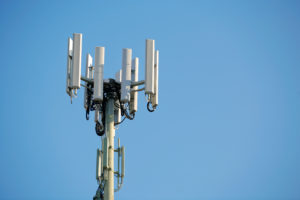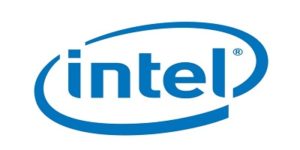
AT&T CEO Randall Stephenson discussed today how the updates being made to their towers to support the first responder network FirstNet will also help with the transition to 5G.
“To build out this FirstNet capability, this first responder network, we have to go climb every cell tower. Literally, we have to go touch every cell tower over the next couple of years,” explained Stephenson. “As we’re touching those cell towers, every single one of them, we have a lot of spectrum in inventory. We will be lighting that spectrum up as we touch each cell tower.”
Once the physical upgrades to the towers are complete, all that will be necessary to “light up” 5G when the time comes is a simple software update. While the timeline for the actual widespread launch of their 5G network is likely a long one, Stephenson said that they expect the fiber build-out for the FirstNet and 5G networks to be complete in 14 million locations within the next 12 months.




/cdn.vox-cdn.com/uploads/chorus_image/image/57483893/Sprint.0.jpg) To bolster support towards their proposed merger, T-Mobile and Sprint filed statements with the FCC today reiterating the importance the merger would have towards bringing 5G to America. As has been their argument since the merge was first announced, the two companies say that a joint investment in 5G will lead to much more rapid development than if the two companies had to move forward with their own independent 5G networks.
To bolster support towards their proposed merger, T-Mobile and Sprint filed statements with the FCC today reiterating the importance the merger would have towards bringing 5G to America. As has been their argument since the merge was first announced, the two companies say that a joint investment in 5G will lead to much more rapid development than if the two companies had to move forward with their own independent 5G networks.


 At a IEE conference this week, Sprint CTO John Saw discussed the technology behind the carrier’s 5G network, how Sprint’s deployment differs from other carriers, and their in-progress rollouts. Saw explained that Sprint’s large holding of spectrum in the 2.5 GHz band gives them the unique ability to simultaneously enable LTE and 5G in the same footprint, something other carriers will have a much harder time doing on the lower frequencies. “With 5G, for the first time, we’re pretty much going to use up every megahertz we have in the 2.5 band,” he said. “We’re going to simultaneously enable LTE and 5G on the 2.5 band. What that means is we’re able to have the same footprint, in terms of coverage, within 5G and 4G. It’s not easy to do if you are building a 5G network on millimeter wave and your LTE network is running on cellular channels.”
At a IEE conference this week, Sprint CTO John Saw discussed the technology behind the carrier’s 5G network, how Sprint’s deployment differs from other carriers, and their in-progress rollouts. Saw explained that Sprint’s large holding of spectrum in the 2.5 GHz band gives them the unique ability to simultaneously enable LTE and 5G in the same footprint, something other carriers will have a much harder time doing on the lower frequencies. “With 5G, for the first time, we’re pretty much going to use up every megahertz we have in the 2.5 band,” he said. “We’re going to simultaneously enable LTE and 5G on the 2.5 band. What that means is we’re able to have the same footprint, in terms of coverage, within 5G and 4G. It’s not easy to do if you are building a 5G network on millimeter wave and your LTE network is running on cellular channels.” On CNBC this week, Verizon exec Lowell McAdam spoke about the progress Verizon has made with their 5G plans and excited millions of SoCal residents when he stated that Los Angeles will join Sacramento as a 5G test market this year. “We bought 36 million miles of fiber so we can have big pipes feeding the cells. We will have hundreds of megahertz of bandwidth to deliver the whole suite of services of 5G,” McAdam said.
On CNBC this week, Verizon exec Lowell McAdam spoke about the progress Verizon has made with their 5G plans and excited millions of SoCal residents when he stated that Los Angeles will join Sacramento as a 5G test market this year. “We bought 36 million miles of fiber so we can have big pipes feeding the cells. We will have hundreds of megahertz of bandwidth to deliver the whole suite of services of 5G,” McAdam said.